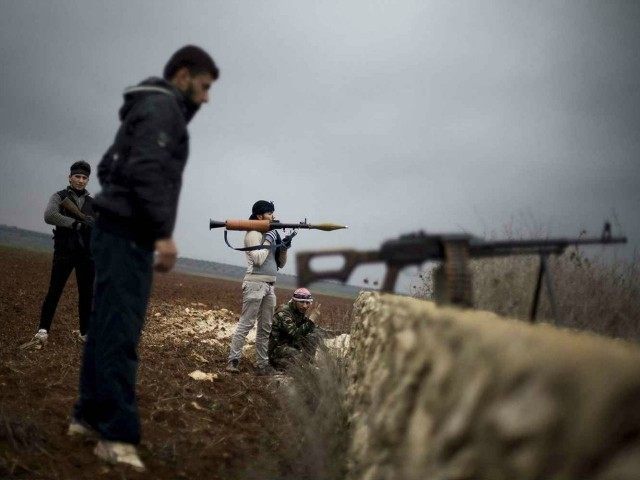On paper, the plan sounded reasonable enough.
The Pentagon would identify and recruit moderate Syrian rebels — the guys who want to overthrow their autocratic president, Bashar al-Assad, but also don’t want Islamic State (ISIS) terrorists running their country — and train them to be effective fighters.
Once properly trained, they would be armed with top-notch American gear and sent out to impose peace on their country, all without large-scale U.S. troop involvement reminiscent of the war in Iraq. About 5,000 rebels would be trained in 2015, the Pentagon said, and three times that number this year.
But $500 million later, the program is shuttered after it successfully trained just four or five rebels.
Not four or five thousand. Not four or five militias. Four or five people — the only rebels who made it through the training and into the battlefield without defecting to al-Qaeda (and taking their weapons with them), getting kidnapped, or simply deserting altogether.
That small group recruited a few friends and claimed a tiny piece of territory at a southernmost border crossing with Iraq. They have held onto it with reasonable success until, as the Washington Post reported Memorial Day weekend, an ISIS suicide attack did serious damage to the small base. The group’s commander suggests that the attack could have been prevented, or at least its damaged minimized, with better U.S. support. “I’m not saying the Americans let us down, but there is dereliction of duty,” he said. “They are not doing what they could.”
Whether his assessment is fair or not, that this single, struggling outpost is what $500 million gets us is a damning indictment of hubristic efforts to manipulate a situation we clearly do not adequately understand.
And though the original training debacle was canceled back in October after it was revealed to be a rank embarrassment, the Obama Administration just won’t give up on this demonstrably expensive and foolhardy concept. In fact, its new incarnation has the potential to fail more spectacularly than the old.
One reason the original plan never picked up much speed was the extensive individual vetting process applied to each and every fighter. The theory was that this would ensure American time and tax dollars would not be wasted on terrorist sympathizers. (Of course, we’ve seen how well that worked out.) Now, the Pentagon says that learning from its mistakes means it will only vet the leaders of the groups it works with and then focus on giving them free weapons and other equipment.
So since October, our government has been sending massive quantities of guns and ammunition to people it kinda hopes are cool with freedom and stuff.
What could go wrong? If history is any guide, everything.
American weaponry — including but far from limited to $1 billion in U.S. Humvees — has a well-established penchant for ending up in ISIS’s hands even when we give it to known allies. Indeed, one reason the Pentagon has transferred so much equipment to the Kurds is to prevent them from being outmatched by ISIS’s heavy weaponry – weaponry which includes hundreds of millions of dollars’ worth of gear and arms the United States originally gave to the Iraqi army.
By one estimate from Joshua Landis, a Syria expert at the University of Oklahoma, “Probably 60 to 80 percent of the arms that America shoveled in have gone” to ISIS and other al-Qaeda-linked groups. And even if we take far more conservative tallies, as Rare’s Matt Purple calculates, “every year the United States is spending $100 million to $150 million in weapons, training, infrastructure, and personnel to bolster jihadists.” And that’s just through the CIA.
Needless to say, the Pentagon’s impulse to let local forces fix the mess in Syria is a good one. Neighboring countries and Syrians themselves have a vital national security interest in Syrian (and Iraqi) stability in a way that the United States — thousands of miles away and protected by both the biggest moat and the strongest military in the world — simply does not.
But what we also clearly don’t have is the capability of effectively fostering the success of those forces of stability. U.S. intervention has simply, recklessly pumped more arms and ammunition into a region already seething with arms and ammunition, and it has done so at an unacceptably irresponsible cost to Americans.
Training and arming so-called moderate rebels has achieved next to nothing for the United States and quite a bit for ISIS. It is past time to stop pretending we can get this boondoggle right.
Bonnie Kristian is a fellow at Defense Priorities. She is a contributing writer at The Week and a columnist at Rare, and her writing has also appeared at Time Magazine, Relevant Magazine and The American Conservative, among other outlets.

COMMENTS
Please let us know if you're having issues with commenting.